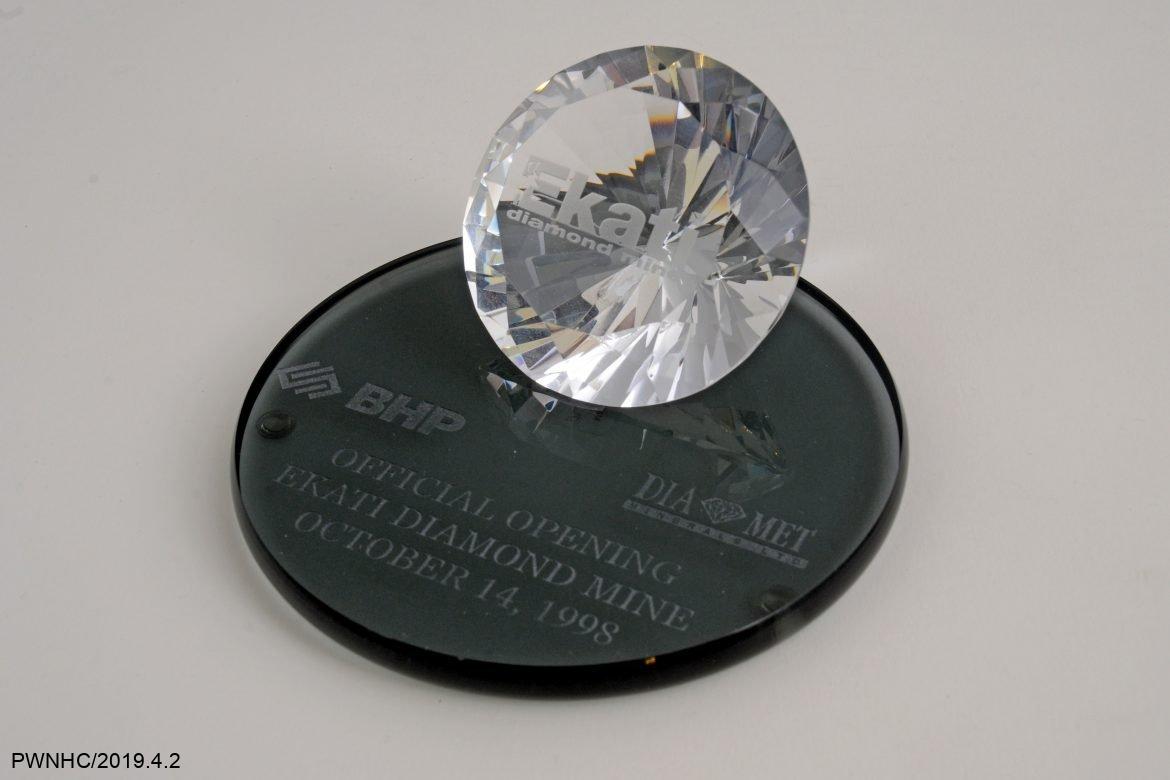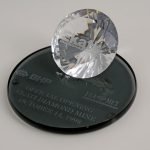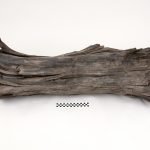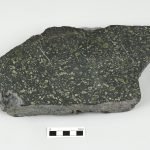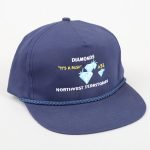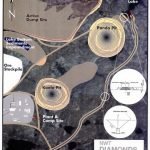1991
Diamond Discovery
In 1991 Charles (Chuck) Fipke, Stewart Blusson and their corporate partner BHP Minerals announced that diamonds had been discovered in a sample of rock taken from Lac de Gras, NWT. This discovery started one of the greatest mineral-staking rushes in Canadian history.
Fipke and Blusson had been hunting for arctic diamonds for over a decade. They were convinced that the geologic conditions northeast of Yellowknife were perfect for the presence of kimberlite. Kimberlite, the rock in which diamonds are found, is extremely rare.
Diamond prospectors do not look for the precious stones directly; instead, they sample the broader landscape for kimberlite indicator minerals. Fipke and Blusson were the first to successfully trace the indicator trail to diamond deposits at Lac de Gras.
Exploration and sampling after the 1991 discovery confirmed the importance of the Lac de Gras diamond field, and BHP Minerals announced in 1994 that it would proceed with constructing a mine. Diamonds were either intriguing or concerning, depending on whom you asked. Some northerners pinned hopes on jobs and spinoff benefits. In contrast, others were deeply troubled at the prospect of unchecked mineral development and its effects on the animals, especially the caribou of the arctic tundra. The level of public concern meant that BHP’s diamond project was subjected to the highest level of environmental assessment in Canada.
The 1996 public hearings were a chance for Indigenous people to voice their concerns on the impact of a diamond mine on their cultural traditions, the land and the animals, like caribou, that they relied on. The Indigenous people also sought a guarantee of employment and business opportunities at the diamond mines. Indigenous rights to participate as stakeholders were enshrined through socio-economic, environmental, and impact benefit agreements.
Canada’s first diamond mine opened in 1998, Ekati (the Tłı̨chǫ word for ‘Fat Lake’ knows as Lac de Gras), was the culmination of Chuck Fipke’s and BHP Minerals’ dedicated exploration and a rigid environmental assessment process that aimed to change the way resource development was done in the Northwest Territories. Diavik Mine became the NWT’s second diamond producer in 2002, followed by De Beer’s mines at Snap Lake and Gahcho Kue. Diamond exploration continues in the north today in hopes of yet another big find.
